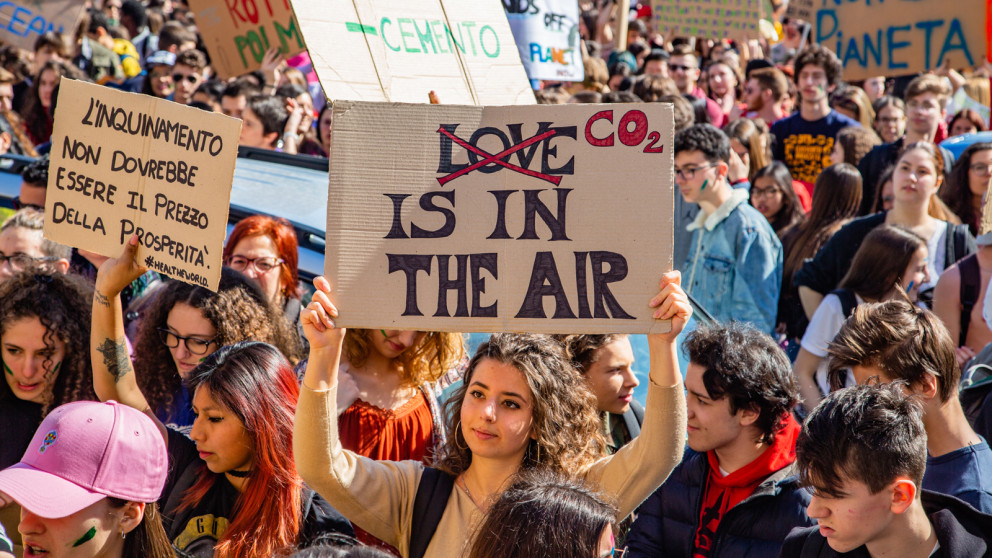Carbon Capture & Storage: The Renaissance of a Controversial Technology
25.10.2024

By Tobias Haas (RIFS), Alina Brad (University of Vienna), Etienne Schneider (University of Vienna)
Efforts to establish carbon capture and storage (CCS) technologies in Germany failed in the first decade of the millennium. The technologies are now experiencing a remarkable renaissance. The German government has set out the cornerstones of a national carbon management strategy, a long-term strategy for negative emissions is in the consultation phase, and an amendment to Carbon Dioxide Storage Act is already in the parliamentary process. Conflicts, uncertainties and risks remain, however.
CCS: The global view
The idea of storing carbon dioxide underground dates back to the 1970s. It was originally conceived as a form of geoengineering and was intended to slow the increase in greenhouse gases in the atmosphere. The technology first attracted widespread attention in the early 2000s. The Intergovernmental Panel on Climate Change published a special report on CCS in 2005, which acknowledged the importance of this technology in mitigating climate change. The first CCS plants were built back in the 1990s. In Norway, carbon dioxide has been stored in the Sleipner CCS Project in the Norwegian North Sea since 1996.
Despite its great potential and promise for the future, CCS technologies have not yet become established. The number of CCS projects completed has consistently fallen short of the optimistic forecasts. Why is this the case?
Problems
The Global CCS Institute cites the high costs and uncertainties associated with projects as a key obstacle to the development of CCS. It is important to note that CCS projects combine a range of technologies that are used to capture, compress, transport and store carbon dioxide. The small number of projects and unique geological conditions at each storage site makes it difficult to determine the costs and risks of CCS technologies. On top of this, Europe lacks pipeline infrastructure suitable for the long-distance transportation of CO2, the legal and regulatory framework for the upscaling of CCS still needs to be created, and CO2 is trading significantly below the forecast costs for CCS in the European emissions trading system.
CCS in Germany: The early 2000s
In Germany, however, it was not so much the potential costs that led to the failure of CCS. Rather, it was the fierce opposition to the development of CCS projects – especially in areas earmarked for storage sites. Moreover, the projects considered at the time were envisaged as a lifeline for coal power plants. The question arose as to whether Germany’s future electricity supply should be based on coal with CCS or on renewables. The debate was ultimately decided in favour of the latter. The Carbon Dioxide Storage Act - often referred to as the CCS Prevention Act - was then passed in 2012. Apart from a pilot plant in Ketzin, Brandenburg, CCS technologies have not been trialled in Germany.
CCS in Germany today
In recent years, CCS technology has experienced a remarkable renaissance. This has unfolded against the backdrop of an increasingly heated political debate on climate change and the adoption of net zero targets. CCS plays a significant role in all five climate neutrality scenarios for Germany - the annual storage requirement for 2045 is estimated to be between 34 and 73 million tonnes.
In the meantime, CCS deployment is no longer envisaged as a means to secure the future of coal power, but as a solution for hard-to-abate or unavoidable residual emissions. The cement and lime industries, as well as waste incineration, are among the sectors identified for future CCS deployment. However, precisely which industries should benefit from future CCS infrastructure – and the extent to which they should – remains controversial. This is due to the continuing risk of fossil fuel path dependency. Germany’s Carbon Management Strategy, for example, favours a technology-neutral approach that only excludes coal-fired power plants. Environmental NGOs have criticised the draft accordingly.
The question of what role CCS should play in achieving negative emissions is also unresolved. Bioenergy and the capture of carbon dioxide from the ambient air in conjunction with CCS, i.e., BECCS (Bioenergy and CCS) and DACCS (Direct-Air-Capture and Carbon Storage), are widely seen as promising solutions for carbon dioxide removal. However, the future availability and capacity of these technologies is unclear.
Future scenarios
CCS is a component of a climate action paradigm that focuses on technological solutions. Under this paradigm, technologies such as CCS, but also hydrogen and synthetic fuels, are the primary means of achieving climate neutrality and safeguarding economic growth. One problem with this paradigm is that the land and resource requirements for the necessary infrastructures are likely to fuel conflicts and deepen inequalities.
In light of these constraints, as we have argued previously, we would do well to prioritise sufficiency and tap into opportunities to reduce end consumption (demand-side mitigation) in order to reduce future reliance on CCS as well as BECCS and DACCS to offset residual emissions. This is not to say that CCS is utterly obsolete: Even if countries do succeed in implementing far-reaching decarbonisation strategies and pivoting towards sufficiency and post-growth economics, some residual emissions will remain.
At the same time, natural carbon sinks that could compensate for these emissions will come under increasing pressure due to climate change. The question therefore should be less about whether CCS and CCS-based technologies should be used to remove CO2 from the atmosphere. Instead, we should be asking which and whose hard-to-abate emissions could be reduced or offset – and crucially, how CCS fits into the bigger picture of achieving global climate justice.
This article was first published on 30 October 2024 in the Bertelsmann Foundation's Transforming Economies blog.
